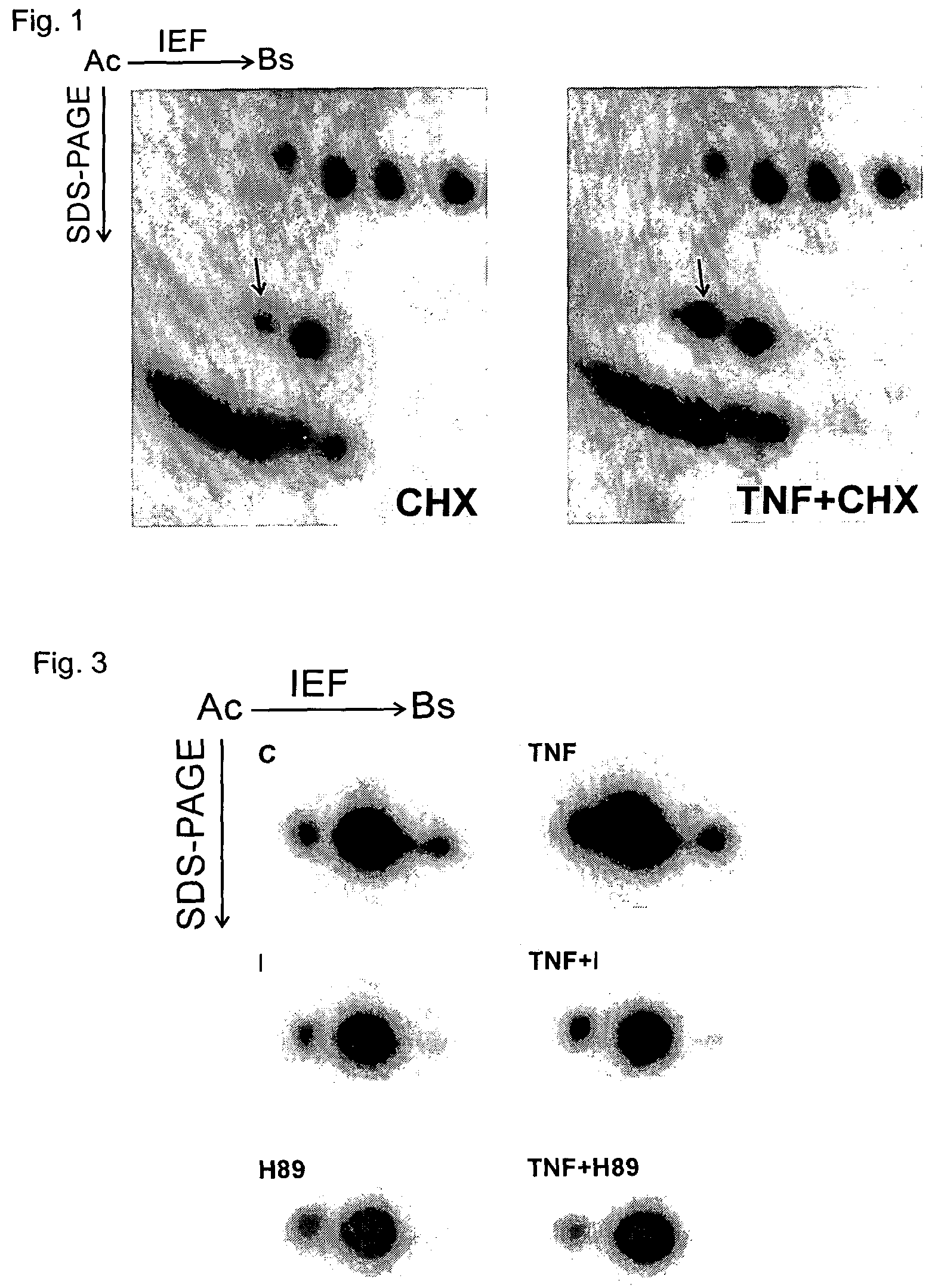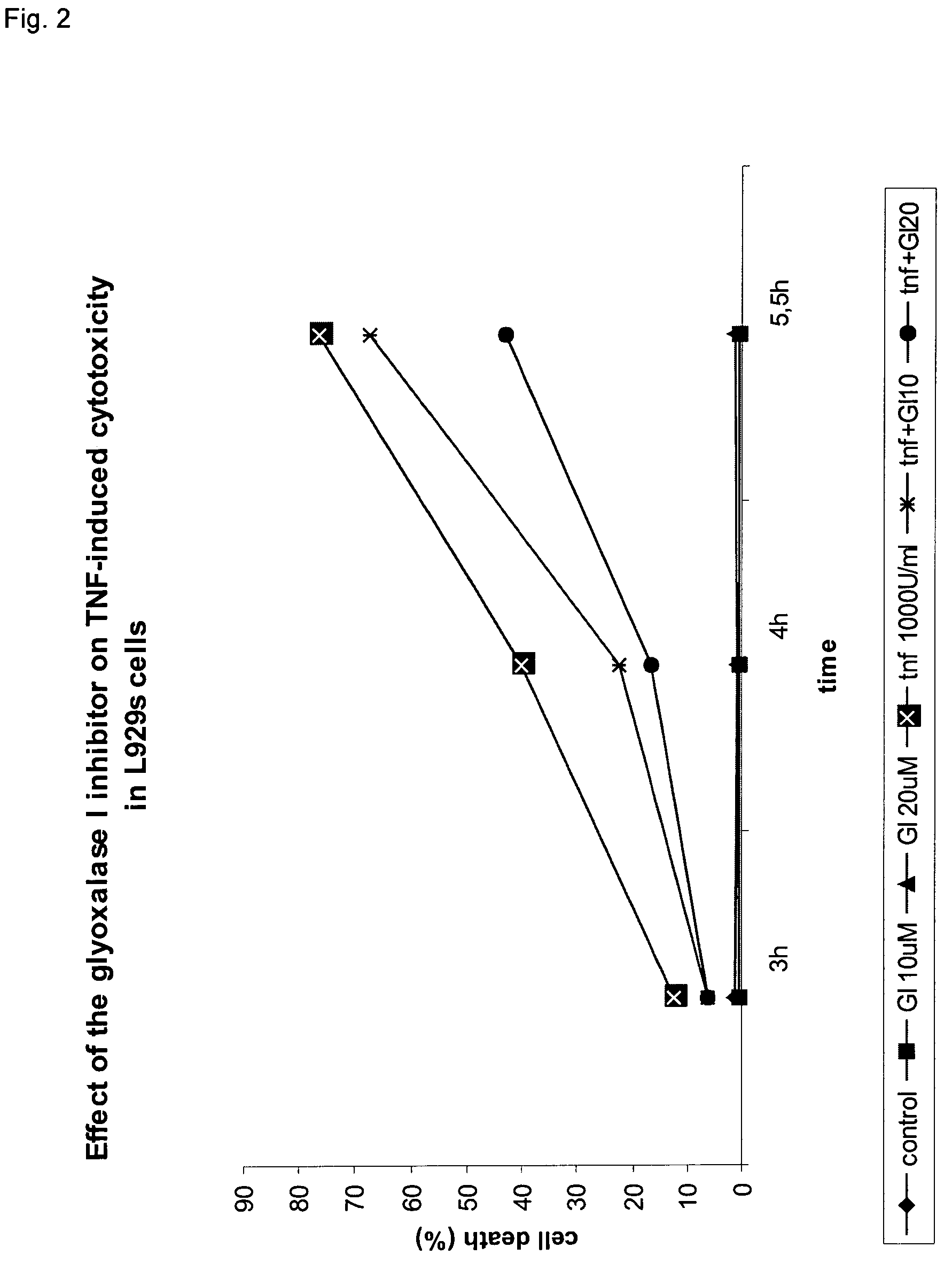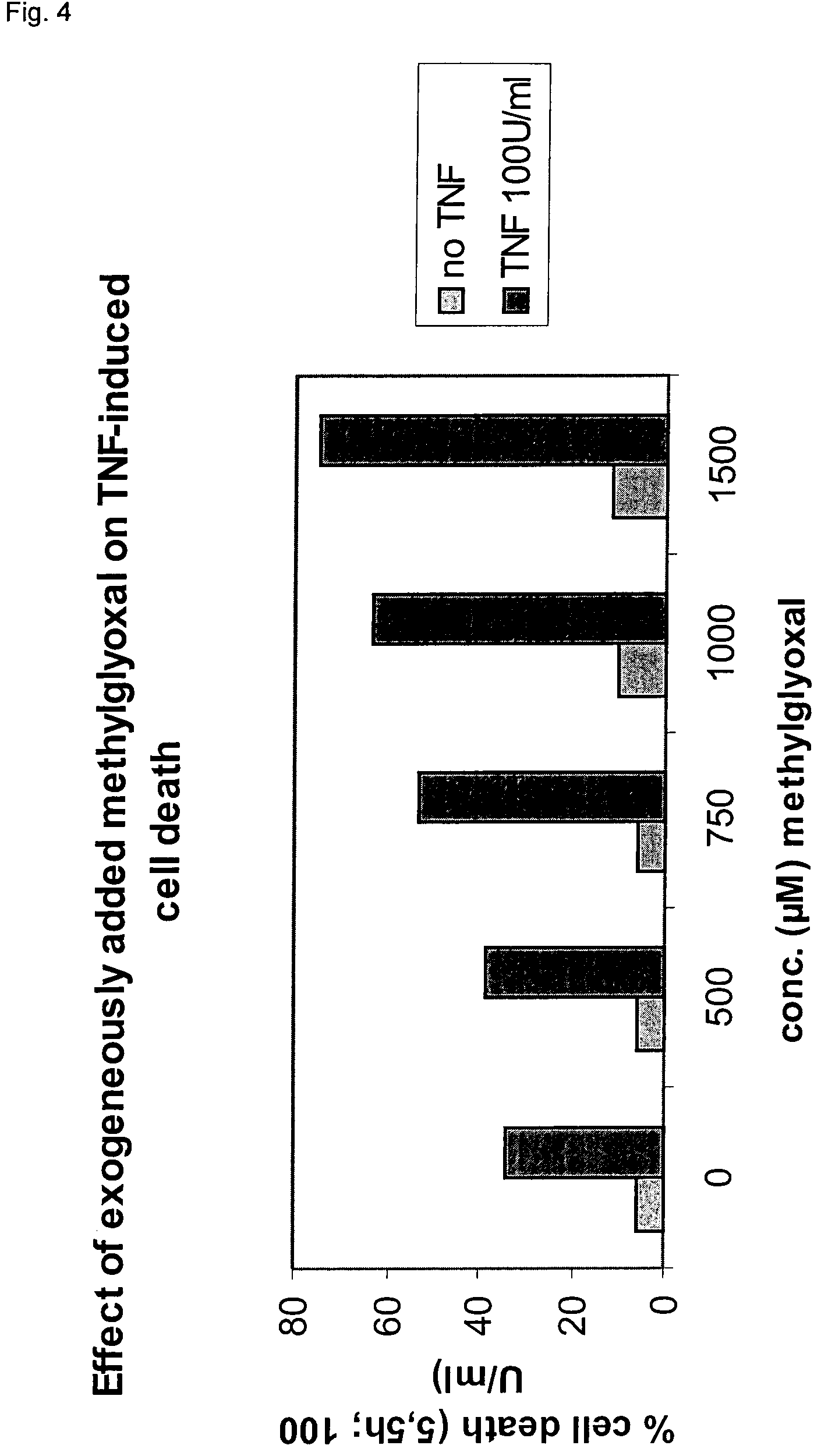Phosphorylated glyoxalase I and its use
a technology of phosphorylated mammalian glyoxalase and phosphorylated form, which is applied in the field of phosphorylated form of mammalian glyoxalase i, can solve the problem that phosphorylated mammalian glyoxalase i does exist, and achieve the effect of modulating tnf-induced cell death and being easy to constru
- Summary
- Abstract
- Description
- Claims
- Application Information
AI Technical Summary
Benefits of technology
Problems solved by technology
Method used
Image
Examples
example 1
TNF Induces Increased Phosphorylation of Glyoxalase I
[0039]FIG. 1 shows the autoradiogram of the two-dimensional gels from TNF-treated and control samples that were derived from cells labeled with 32P-orthophosphate. The protein spot with increased phosphorylation identified as glyoxalase I is indicated by an arrow. It was identified by mass spectrometry analysis of a peptide mixture derived from an in-gel digestion of the excised protein spot. The increased phosphorylation of glyoxalase I is already observed after 15 minutes of TNF treatment, but is much more pronounced after 1.5 hours of TNF treatment (FIG. 1). This indicates that the TNF-induced phosphorylation of GLO1 is an early but lasting event.
example 2
The Glyoxalase I Inhibitor S-p-bromobenzylglutathione Cyclopentyl Diester Inhibits TNF-induced Cell Death
[0040]To examine the role of glyoxalase I in TNF-induced cell death, we tested the effect of the cell permeable competitive inhibitor of glyoxalase I S-p-bromobenzylglutathione diester on cell death. Preincubation (1 hour 10 minutes) of L929 cells with this inhibitor strongly inhibits TNF-induced cell death in a concentration-dependent manner (FIG. 2). An inhibition of 60% was obtained at a concentration of 20 μM of the inhibitor. However, when the inhibitor and TNF were added at the same time, a synergistic effect on TNF-induced cell death was obtained (50% increase in cell death at a concentration of 20 μM of the inhibitor). This synergistic effect is more pronounced at lower doses of TNF; that is, when the cells die more slowly.
example 3
The Glyoxalase I Inhibitor S-p-bromobenzylglutathione Cyclopentyl Diester Inhibits the TNF-induced Phoshorylation of Glyoxalase I
[0041]This differential effect of the inhibitor on TNF-induced cell death prompted us to investigate whether the binding of the inhibitor to GLO1 competes and thus inhibits the TNF-induced phosphorylation of GLO1. FIG. 3 shows the Western blots, developed with an anti-human glyoxalase I polyclonal antibody, of 2-dimensional gels (pH 3–10) from total cell lysates derived from TNF-treated and control cells and from TNF-treated and control cells that were first preincubated with the glyoxalase I inhibitor for 1 hour 10 minutes. In the upper panels, you can see that TNF induces a more acidic phosphoisoform of glyoxalase I which is not well separated from the nonphosphorylated form (fills the space between the most left isoform and the main nonphosphorylated form. In the lower panels, you can see that in the presence of the glyoxalase I inhibitor, TNF cannot in...
PUM
| Property | Measurement | Unit |
|---|---|---|
| concentrations | aaaaa | aaaaa |
| mass | aaaaa | aaaaa |
| apparent mass | aaaaa | aaaaa |
Abstract
Description
Claims
Application Information
 Login to View More
Login to View More - R&D
- Intellectual Property
- Life Sciences
- Materials
- Tech Scout
- Unparalleled Data Quality
- Higher Quality Content
- 60% Fewer Hallucinations
Browse by: Latest US Patents, China's latest patents, Technical Efficacy Thesaurus, Application Domain, Technology Topic, Popular Technical Reports.
© 2025 PatSnap. All rights reserved.Legal|Privacy policy|Modern Slavery Act Transparency Statement|Sitemap|About US| Contact US: help@patsnap.com



